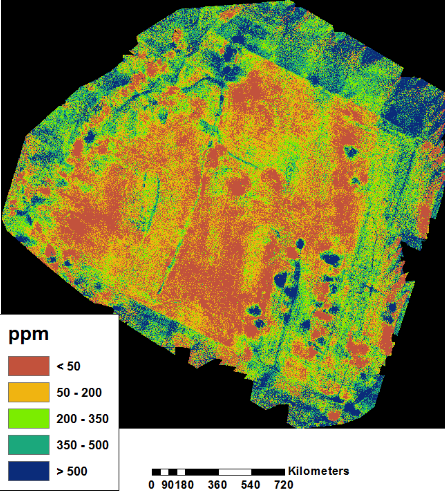The recent grain season in Australia has provided us with an opportunity to achieve some significant milestones in detecting nitrogen and a range of other nutrients to help growers make more informed fertilisation decisions early in the season. We have monitored and analysed thousands of hectares of barley, canola, sorghum and wheat grown in Western Australia, South Australia, Victoria, New South Wales and Queensland.
Our aim for this season was to determine the best way to use different data layers (multi- and hyper-spectral imagery, thermal and radar), platforms (satellite, aircraft and drone) and algorithms for detecting common grain stressors during the different growth stages across the season. We concentrated on nitrogen and water stress as they generally have the greatest impact to yield.
Our approach was to compare our analysis both with "ground-truthing" - field samples and observations - during the season as well as against yield data at the end of the season. Hundreds of tissue samples were taken in the monitored fields as close as to when the remote-sensing data was captured, with the precise location of each sample recorded.
The sampling nutrient content and wet biomass results were correlated against the vegetation indices generated by FluroSat to measure correlation. For those fields where we found moderate to high correlation, we generated nitrogen and water stress maps like the below.

We were encouraged by the moderate to a strong correlation between CCCI generated from both drone and satellite data and nitrogen (Dumas %), potassium and zinc content. We also achieved a moderate correlation with phosphorus and nitrogen nitrate. Satellite (Sentinel 2) radar data also had a moderate correlation to plant wet biomass and water content sampling data.
The fact that we got strong nutrient correlations at early stages across the range of crop types and varieties monitored make us even more confident in the advantages of using FluroSat to accurately inform in-crop fertilisation strategies. Agronomists and growers can minimise the “guesswork” in visual scouting by using the data to remotely scout all of their fields to detect and focus only those areas requiring intervention.
We are now applying the achievements and insights gained into the FluroSat Platform in readiness for the upcoming Australian Cotton season and next year's grain season.



